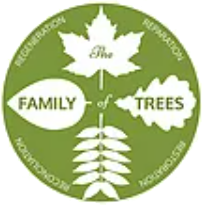Most homeowners typically face an array of choices involved in designing, building, outfitting, upgrading, expanding, tweaking, and/or overhauling the sanctuaries in which they reside. For many, it provides an important opportunity to express their personal values in the choices made, be they ethical, social, aesthetic, or environmental.
Fortunately, the expanding green building movement makes it easier to “walk the talk” when it comes to our homes. Since it first emerged in the early 1990s, green building (a.k.a. sustainable design, eco-friendly building, high performance construction, among others) has become the “buzz” phrase of the new millennium. Among other advantages, green homes tend to be more energy-efficient and have better indoor air quality than conventional houses. Its growing popularity even prompted the former president of the National Association of Home Builders to predict that “œbuilders who are not building green by the end of this decade will not be building at all.”
Green building is a catch phrase for design and construction that is holistic, integrated, healthy, environmentally friendly, sustainable, resource-efficient, and responsible. Green buildings are designed and constructed using sound building-science principles. A true green building is the sum of its parts; no one aspect or element alone can make it green. For example, using nontoxic paint in a house that is an “energy hog” does not make the house green. It must incorporate all or many of the green principles.
In Minnesota, there are a few emerging green building programs. One such program, the U.S. Green Building Council’s LEED for Homes (LEED-H), is the product of what began as a design and rating tool for commercial buildings. Homes that meet or exceed a certain point threshold for “œgreenness” can receive a certified, silver, gold, or platinum designation. LEED-H, which is now it its pilot stage nationwide, is a voluntary program that targets the top 25% of market rate new homes.
Another similar, voluntary green building program is being crafted by members of Minnesota National Association of the Remodeling Industry (NARI) and the Twin Cities Remodelers Council. This program is planned for launch during 2007. Until then, homeowners and purchasers have several avenues available to help them achieve or locate a greener house. The following are some ideas, resources, and principles.
1. Adapt and apply existing green building guidelines, such as those developed by the Sustainable Buildings Industry Council, (www.sbicouncil.org), or Wisconsin’s Green Built Home™ Guidelines (www.greenbuilthome.org).
2. Look for new homes that meet the US Department of Energy’s Building America program criteria for energy efficiency or the EPA’s Energy Star for Homes program (www.eere.energy.gov/buildings/building_america/cfm/state.cfm/state=mn/full=Minnesota or www.eeba.org/alliances/energystar, click on “Find an Energy Star Builder”).
3. Build a house that meets the American Lung Association’s Health House guidelines. Registered builders in Minnesota can be found at (www.healthhouse.org).
4. To reduce pollution and waste associated with transportation and building construction, choose homes in areas with existing infrastructure that are close to schools, mass transit, work, and other community services.
5. Visit the Living Green Expo at the State Fairgrounds the first weekend in May to meet builders and remodelers who are practicing “œgreen” (www.livinggreenexpo.org).
6. Use nontoxic paints and other finishes, reclaimed wood and natural building materials. Lakewinds Natural Home in Minnetonka and Linden Hills Natural Home in Minneapolis are two distributors of low/no toxicity paints. Natural Built Home in Minneapolis sells paint as well as other green building finishes, products, and materials. The ReUse Center and Bauer Brothers Salvage, both in Minneapolis, sell salvaged wood flooring and other products.
7. Choose energy-efficient appliances and water-efficient fixtures. Look for products that have earned the Energy Star rating or the EPA’s new WaterSense certification.
8. Use locally-sourced and/or manufactured materials, products with recycled content, sustainably-produced products (such as FSC-sustainably certified wood), and products that are durable and/or recyclable.
9. Have an energy-audit conducted on your house to determine where air leakages are and how energy-efficiency can be improved. Contact your local utility company (in Minneapolis, Centerpoint Energy or St. Paul, NEC, for example) to schedule.
10. Review the myriad of resources posted on the MPCA’s green building website (www.moea.state.mn.us/greenbuilding/residential.cfm).
Green Remodeling: Changing the World One Room at a Time, Johnston, David and Kim Master, New Society Publishers, 2004.
The New Ecological Home: A Complete Guide to Green Building Options, Chiras, Daniel, Chelsea, Green Publishing, 2004.







